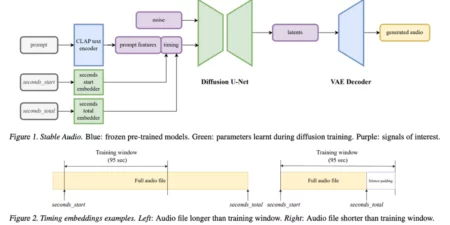Fret buzz is frequently a result of temperature and humidity changes. When a string vibrates against one or more frets, it makes a buzzing sound known as fret. Fret buzz can occasionally occur when the string is in the open position, and it can also happen on frets or strings.
What causes fret buzz on acoustic guitar? Fret buzz can happen on an electric or acoustic guitar for several reasons. Some are simple to locate and address. Others might need a skilled hand.
Whether you’re playing your guitar at home, in your living room, or on stage, it can be a lovely and compelling experience. But after time, you can discover that your electric or acoustic guitar has a grating buzz that completely spoils your tone.
While playing, you may occasionally hear a buzz or zap sound on some guitar frets. Fret buzz on a guitar is what this is. It could be a significant issue because the guitar needs to fix. Stay tuned for more information about what causes string buzz on a guitar.
What is Fret Buzz?
As you are undoubtedly already aware, a stuck guitar string vibrates. If for some reason, the vibrating string must place too close to the frets, fret buzz will result from frequent collisions between the vibrating string and the metal fret.
Guitar buzzing can happen on any string, although it is most frequently noticed on the bass string since it has the highest mass and vibrates in the largest elliptical pattern.
However, you can also find this on higher strings because I start to solo at about the 12th to 15th fret, where fret wear must frequently observed—leaving the string vulnerable to slamming into frets higher on the fretboard, where I spend much less time.
Why Does My Guitar Buzz?
Numerous causes exist for this guitar string vibration problem, meaning multiple efficient methods exist to eliminate it. Here are 7 potential reasons for guitar fret buzz and several solutions you can utilize immediately. Let’s explore the causes and how to get rid of fret buzz:

1) Dirty Strings
The strings themselves frequently bring buzz on. The guitar strings’ buzzing sound can cause by dirt and grease accumulated over time.
How to fix guitar string buzz (Dirty Strings): One technique to prevent this is frequently changing your strings, but occasionally all you need to run a tiny kitchen towel along each string. For optimal results, wrap the entire string because the underside of the string is a prime spot for the grunge to accumulate.
2) An Unclean Fretboard
How to stop string buzz if you have a dirty fretboard? Make sure to clean your guitar’s fretboard and the strings to eliminate any dirt and grime that has accrued there. A similar dirt-accumulating effect can occur when your fingers are pressing down on the frets.
Run a small kitchen towel or tissue along the entire fretboard, being sure to remove any accumulation of dirt that may be there, just as you did with the strings. You can buy cleaning products for the fretboard and the strings separately.
3) Bridge Issues
Play each open string separately. Examine each one to see if one (or more) is the source of the buzzing noise. If there is a culprit, be sure the bridge isn’t the noise source.
What causes string buzz on electric guitar? You can discover a loose component on an electric guitar that is the cause of the buzz. If you’ve never fixed a problem like this yourself, you could require an expert’s assistance, just like with some of the next issues. By looking for your guitar’s brand and model online, you can find a solution if you’ve got some experience or are eager to try something new.
4) A Hunched Neck
Sometimes the issue with your guitar stems from the neck rather than the strings or the nut. The neck of your guitar may twist or bend with time, even a little bit, especially if you store it anywhere other than a case in a dry area. It may cause a buzzing sound where the strings meet the frets.
Although you can adjust the truss rod, it’s best to have professional assistance because you don’t want to worsen the problem. Sometimes, other than changing the neck, there is no actual cure for this.
It highlights the significance of giving any stringed instrument the right attention and upkeep, which includes storing your guitar in a case that regulates humidity and avoids moist or humid situations.
5) Rusted Nut
Check the area of your guitar where the nut must place to see if the strings haven’t shifted further down over time and if the buzzing sound still exists after cleaning the neck, fretboard, and bridge.
To correct this, you might eventually need to replace the nut, but a temporary solution could be to insert a tiny piece of paper that has been folded once or twice just beneath the string where it enters the nut to lift it just a little bit and stop it from buzzing.
6) Super Slow Motion
Your frets may buzz if you’ve adjusted the action on your guitar too low or if it has lowered itself over time, especially if you’re used to playing forcefully. One of the more frequent reasons for fret buzz is this.
You must change the guitar’s saddle height to solve this issue. With electric guitars, you shouldn’t have any problems doing this, but with an acoustic guitar, it can be a challenging chore.
7) Irregular Frets
How to fix low E string buzz? The fact that you’re using an uneven fretboard may be the last problem you encounter. This problem is probably just a result of too much play, and if you take the time to look, you should be able to find it.
Play every note on your low E string first, then listen for buzzes. Check the corresponding frets and repeat the process for each string. Holding your guitar in your hands or setting it down on a flat surface, scan the fretboard from the nut to the bridge for any bumps and dips. You should be able to take your frets to a guitar shop to have them replaced if they wear out.
Raise the Buzzing String with A Piece of Paper
Consider this modification to be your guitar’s spare tire. It will get you through your next rehearsal, but you won’t want to depend on it for too long. Although you can try it on any buzzing strings, it works best if just one or two of them are buzzing.
- Let the buzzing string out of the nut by loosening it just enough. The string-crossing bar at the very top of the fretboard is known as the nut.
- A little to one side, pull the string.
- A little piece of folded paper must insert into the string notch.
- Back across the paper with the string. Reposition the string by gradually tightening it.
- Rip off any paper that protrudes.
- If the string is still buzzing, try lifting it higher with a three- or four-layer stack of paper.
1) Changed Strings Thickness
Expert guitarists claim that your guitar string’s thickness may also contribute to buzzing. Different guitar strings have different gauges. Therefore, you must determine the ideal string thickness for your guitar to play at the highest level possible. I advise you to look over and rule out the other potential causes first.
I hope you checked the other causes first if you think this might be the source of your buzzing. To start, think back to the thickness of your previous guitar string; if you notice that it differs from the one you currently have, you should change it again. Suppose you can’t recall the prior thickness; the most typical thicknesses are .010 – .046 and .009 – .042. You may also ask the store where you purchased your guitar if this is the case.
2) Guitar Pickups Are Too High
Your electric guitar’s pickups comprise magnets. On the other hand, your guitar’s strings must construct of metal. As a result, if the guitar pickups are set too high, they may pull strings in their direction. They may even pull the guitar strings, causing them to vibrate and strike the frets of your electric guitar, which will produce the buzzing.
You should go ahead and tweak the guitar pickups to get rid of this problem. You should set the guitar pickups so that the individual pole pieces are no closer to the string than 3 mm. Holding one of your strings close to the 24th fret will allow you to gauge the distance between the pickup and strings; make sure to check all your strings.
Fret buzz got by a combination of a neck with an uneven or warped shape, too little bow in the neck, and too low a bridge string height. Consistent fret height along the entire neck and the type and gauge of the strings used are other significant considerations.
On low-action strings, a little fret buzz is typical and should tolerate. Don’t even try to play the guitar with 0 fret buzz; it is impossible. When connected to an amplifier, you should only check for fret buzz on an electric guitar.
You have two options: add a humidifier to the space where you keep your guitar or buy a guitar humidifier that will fit inside its case. You should make sure that until the straight end has a 1/32″ gap at each end.





